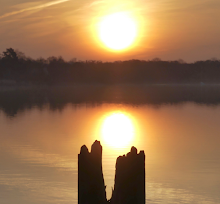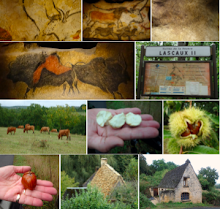The entire morning was spent around and on Montmartre. But before we engaged in the 3-hours walking tour we had some coffee together with the locals.
We had booked a local oenologist, Philippe, to guide us around to the vineyards and other secrets of Montmartre, – and so he did.
Philippe was very knowledgeable and we learned a lot about Montmartre – and got our ears and brains honed as well because we asked him to do the whole tour in French.
We visited a small vineyard with Malbec grapes in an enclosed hospital garden,
– stopped at the peculiarly bridged-over cemetery,
– checked out places that were very lively nightlife hotspots in the "good old days",
– and passed the vertical vineyard managed by the firemen and their families who all live in this Montmartre firehouse. The firemen are not allowed to drink alcohol during their very long work shifts, so they produce a dealcoholized red wine from their own grapes.
Finally, we reached the Pigalle with its famous Moulin Rouge and proceeded to ascend even more.
Several streets offered splendid vistas over parts of lowland Paris.
Out of the 60 windmills on Montmartre a century ago only two have survived. Here is one of them.
Approaching the summit along the north face, the basilica of Sacré-Coeur appears among the greenery. – And then: Paris' biggest vineyard, the Clos de Montmartre.
A rather peculiar mix of all kinds of vines on a north-facing slope.
A marginal place for a vineyard in any region, but the 60 shareholders are enthusiastic and each fall they do produce some wine, reportedly of mediocre quality.
We finished the tour next to Sacré-Coeur.
We left Montmartre and headed for Stalingrad,
– and changed Metro line for île Saint-Louis.
And now to something completely different.
We wanted to visit a tiny museum with memorabilia relating to Fryderyk Chopin who lived in Paris for more than 15 years.
This is a grand piano exactly the type Chopin preferred to play on when he entertained his audience in the Parisian salons,
– this is a cast of Chopin's left hand with which he played so much wonderful music.
 |
| La Grande Arche designed by the Danish architect Johann Otto von Spreckelsen. |
Following a late afternoon siesta and a good meal we decided to visit La Grande Arche in La Défense, Europe's largest purpose-built business district with 72 glass-and-steel buildings (of which 19 are skyscrapers), 180.000 daily workers, and 3.500.000 square metres of office space.
The view from La Grande Arche eastwards along the Historical Axis of Paris. Click on the above photo to better see the Arc de Triomphe, the Avenue Champs-Èlysées and the Big Ferris Wheel at Place de la Concorde. All in a straight line 9 km long.
This Thursday turned out to be a splendid day for us in Paris,
– so we'll give it a mega-"thumb's up" !












































